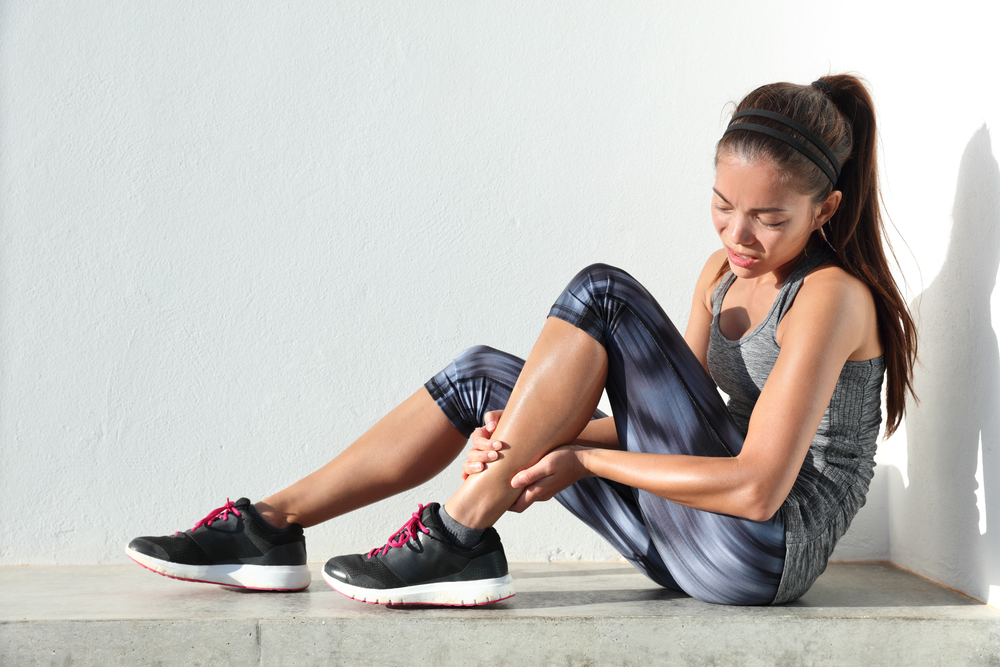
Sore legs can be expected as a part of running. However, painfully sore legs and ongoing soreness can interfere with your running training and a consistent schedule. While you can help prevent sore legs by using the right home workout equipment, when your legs are already sore, this advice isn’t as helpful.
So, to help you treat your sore legs after running, here are ten different things you can try out, many of which you can mix and match to find your perfect sore legs treatment.
1. Try Compression Clothing
To help reduce swelling in your legs, you can try and use compression clothing. As the fluid builds up that comes with swollen or sore legs can impede the healing process, it is important that the fluid is controlled so that your legs can heal. Different types of compression clothing you can try are:
- Compression shorts
- Compression socks
- Compression leggings
Try not to wear compression clothes to bed, as you should sleep unrestricted and allow your skin to breathe.
2. Hydrate Yourself
Hydration is the king of running recovery. Even if it seems like you haven’t sweated that much, it is likely that the sweat has evaporated. As you stay dehydrated, it is more likely that you will experience sore legs, cramps, and fatigue.
You should primarily hydrate with water, as it is generally superior in rehydrating you without excess sugar and other fillers. However, you may need a drink with electrolytes to help boost your sodium if you sweat heavily.
3. Roll Out Your Legs With A Foam Roller
To help with delayed-onset muscle soreness, foam rolling can be incredibly helpful. There are a variety of foam rolling exercises that allow you to target different muscle groups in your lower body. As these areas are worked out, the foam rolling can encourage an increase of blood flow, which helps enormously with sore legs recovery.
4. Take An Epsom Salt Bath
As Epsom salt is composed of magnesium and sulfates, these compounds work together to help soothe sore legs, blisters, and inflammation. Combine these things with a warm bath—which will help dilate your blood vessels and allow for greater blood flow to increase healing—and you can enjoy a reduction of soreness in your legs.
5. Include A Cool-Down Session
Going from moderate- to high-intensity running sessions can be tough on your body. Instead of sitting down after a running workout, give yourself 5-10 minutes to cool your body down. Static stretches are ideal as you calm your heart rate down and allow you to see how your body feels post-run.
6. Avoid Painkillers
While it may be tempting to pop some anti-inflammatory painkillers to manage your sore legs, you should steer clear of them. For one thing, these types of painkillers can potentially limit the rebuilding of your leg muscles, preventing you from growing stronger.
Also, using painkillers may disguise a real issue with your legs. If you are starting to develop a strain or hairline fractures, painkillers may allow you to push through and keep running when you really shouldn’t.
7. Try Icing Your Legs
Along with using warmth, you can alternate by icing your legs. Using ice as a vasoconstrictor to narrow the blood vessels in your legs can help reduce inflammation. You shouldn’t ice your legs for over 15 minutes, so be sure to keep track of how long you are icing your legs.
8. Increase Mileage Slowly
Muscle soreness can also be a symptom of pushing your body too hard, too fast. While there is a lot of debate of how quickly you can increase your mileage, it is safe to follow the 10% increase rule.
So, if you are running 15 miles a week, you can increase your base mileage by 10%, which means next week, you should hit 16.5 miles.
9. Get A Massage
Much like how foam rolling can help, a massage can also help promote increased blood flow, which, in turn, can help speed up the healing process. You don’t necessarily have to get a sports massage for these benefits, or even go the professional massage therapist route.
Instead, you can pick up different massage tools that will help you massage your sore legs, from motorized massagers to using a lacrosse ball.
10. Refuel Soon After A Run
After a tough running workout, you have created microtears in your leg muscles and stressed them—generally, a positive thing. But if you want to speed up your recovery and get over the soreness, eating 20-40 grams of protein and 20-40 grams of carbohydrates can help.
For the best results, you should eat within 30 minutes after your workout. Your post-workout recovery snack can be as simple as a protein bar or berries in Greek yogurt.
We recommend you try out different ways to treat your sore legs, as some of these tips may work better for you than others. However, be sure to stay aware of your body—if you are experiencing unusual levels of ongoing soreness or sharp pain, you may need to get that checked out to ensure you haven’t sustained an injury.